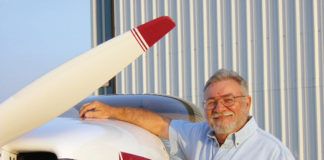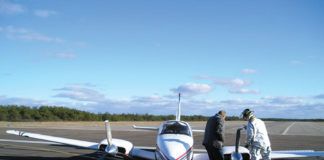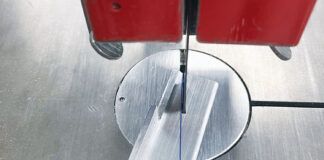John and Debra McBean, owners of Kitfox Aircraft, sat across the dinner table from me at Oshkosh, sharing stories of the trip out from Idaho and generally just, ah, discussing current events-family-friendly code for BS-ing about airplanes. If you’ve met John, you know his tales are Paul Bunyan-sized, though many of them actually have a discernible percentage of truth to them.
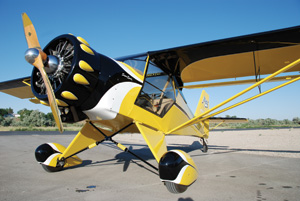
From the it just looks right files: Kitfoxs Rotec-radial-powered Super Sport debuted at Oshkosh this year. Well fly this puppy as soon as we can.
After a few minutes, he turned serious and asked a question that surprised me. What do you think we should do? Where do you think we should take Kitfox? The implied optimism actually took me aback. At the show, many of the company heads were thinking more about how to stretch income through the year and how to get cost out of their products to remain viable. With few exceptions, not many were openly talking about future developments; the focus was closer to the shoelaces than the distant horizon. Then again, maybe they’re worried Ill blab.
Johns question was something Id already pondered right up to the time he called early this year to say, You’re going to love what were working on. An easy mark, I took the hook in the cheek right away: What? Can you imagine how good the Kitfox would look with a radial engine on it? he asked.
That set the mind to reeling. Hmmm. The airplane was designed for a small radial that never got into production, hence the original bump cowl used to cover the variety of Rotaxes that served the design so well through the 1990s. That the airplane lived with a variety of flat engines never really impacted its long-running popularity.
My twisted sense of humor caused me to wonder how the McBeans had bolted a Pratt & Whitney R-985 or even a Jake on the front when the Rotec came to mind. You’re kidding, right? I asked John. No, he said, drawing out the vowel. Were really doing it.
He emailed me a drawing. The project looked great, though as a pure profile image it didn’t quite confer the full retro picture I had in mind.
Then, there it was at Oshkosh. Ka-boom. A Mullicoupe in miniature. Stunning. Not only did the Rotec Super Sport earn a Bronze Lindy for workmanship, it also won the coveted dead grass award for heavy foot traffic during the show.
Whats the appeal? For those missing the back story, a Mullicoupe is a homebuilt designed by Jim Younkin and Bud Dake. Its a Frankenstinian cross between a Howard DGA6 and a Monocoupe 110. Three have been built, and our own avionics guy, Stein Bruch, is building a fourth; two of the original three are still flying. With a Pratt & Whitney R-985 (450 horsepower) and weighing 3600 pounds maximum, the Mullicoupe is a big airplane. But it has the proportions of a small, light airframe almost overloaded with engine-the old racers retort that there’s no replacement for displacement seems apt.
The Rotec Super Sport, despite its Mullicoupe-esque presence, remains a tidy, compact airplane. Rotecs seven-cylinder engine looks larger in photos than it is. Displacement is a mere 172 cubic inches, and power is 110 hp through a 3:2 integral prop-speed reduction drive. In the Kitfox, the R2800 swings a Sensenich wood prop, and will begin testing with the cowling ring shown in the photo.
As this is written, the airplane continues in flight testing, with most of the minor issues being ironed out after a total of 65 hours in the air and a trip from Homedale, Idaho, to Oshkosh and back.
The McBeans had already taken the first development path I would have recommended-kicking the topsoil off the designs nostalgic leanings and digging a trench right down to yesteryear-so I sat at the dinner table swatting mosquitoes and wondering along with them. What can you do to or with the Kitfox that hasnt already been tried? There was a short-wing Speedster version, and Continental- and Lycoming-powered iterations. The kit itself is mature, and there aren’t many ways to reduce build time without running the price up.
Spending the evening deeply considering the challenges of creating and marketing a kit aircraft in these times, I gained a new appreciation for the tightrope these companies must walk. It helps if you’re enjoying yourself, which the Kitfox crew seems to be doing.
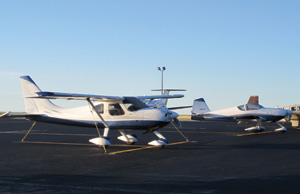
An extra day to get home from Oshkosh permits a glorious early morning departure from Las Vegas, New Mexico. Fellow OSH returnee Michael Reeses RV-6A is in the background.
Knowing When to Stop
Last year, I got an early start out of AirVenture and pushed to California in one long day. Not this year. A later departure put me into the desert southwest during peak thunderstorm hours. Id intended to make Albuquerque for the night, but XM weather was schooling me good. What had been widely scattered storms were collecting in bunches. Without weather concerns, I was on track to land with normal reserves, but any deviation would cut into them, and there aren’t all that many airports in the vicinity. Avoiding boomers low on fuel is, in my view, patently stupid.
So there I was, about 10 miles west of Las Vegas, New Mexico, getting thumped around below the popcorn clouds and seeing red and yellow on NEXRAD ahead of me, when I came to my senses, turned around, and landed. I was glad to see I wasn’t alone. Multiple-RV builder Michael Reese was there, too, stopped en route to the Phoenix area. When Yolanda at the Super 8 offered to send her husband out late on a Saturday afternoon to get us from the airport, the deal was sealed…for both of us.
The next morning, early, I flew home over incredible scenery in clear, cool, calm skies. A tough decision validated.

![]()
Marc Cook has been in aviation journalism for 22 years and in magazine work for more than 25. He is a 4400-hour instrument-rated, multi-engine pilot with experience in nearly 150 types. Hes completed two kit aircraft, an Aero Designs Pulsar XP and a Glastar Sportsman 2+2.

